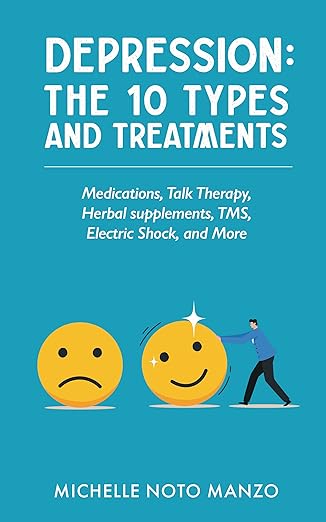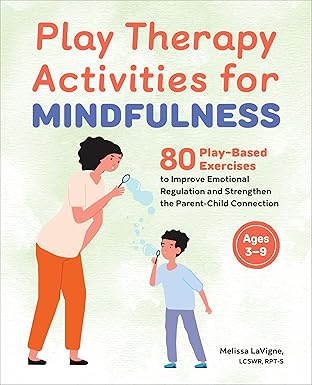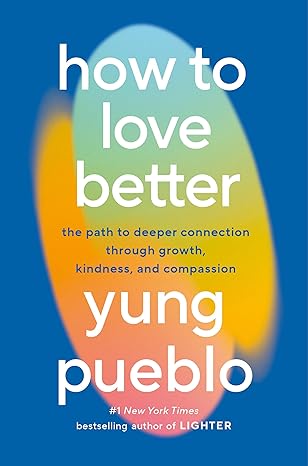Wardlaw's Perspectives in Nutrition has the richly-deserved reputation of providing an accurate, current, in-depth, and thoughtful introduction to the dynamic field of nutrition, and the eleventh edition has been enhanced for both students and instructors. This edition continues the tradition of presenting scientific content that is reliable, accurate, and up-to-date, and it incorporates coverage of recent nutrition research, as well as the recent updates to consumer guidelines and tools -- Dietary Guidelines for Americans, MyPlate, Healthy People 2020, and the new Nutrition Facts panel. It also retains the in-depth coverage students need to fully understand and appreciate the role of nutrition in overall health and to build the scientific knowledge base needed to pursue health-related careers or simply live healthier lives. To enhance these strengths and promote greater comprehension, new research findings and peer-reviewed references are incorporated and artwork is enhanced to further complement the discussions. The presentation of complex concepts was scrutinized to increase clarity through the use of clear, streamlined, precise, and student-friendly language. Timely and intriguing examples, illustrative analogies, clinical insights, culinary perspectives, historical notes, future perspectives, and thought-provoking photos make the text enjoyable and interesting to students and instructors alike.
چکیده فارسی
دیدگاههای واردلاو در تغذیه دارای شهرت فراوانی است که به ارائه مقدمهای دقیق، جاری، عمیق و متفکرانه در زمینه پویای تغذیه میپردازد، و ویرایش یازدهم هم برای دانشآموزان و هم برای مربیان بهبود یافته است. این نسخه سنت ارائه محتوای علمی قابل اعتماد، دقیق و بهروز را ادامه میدهد، و شامل پوشش تحقیقات اخیر تغذیه، و همچنین بهروزرسانیهای اخیر دستورالعملها و ابزار مصرفکننده - دستورالعملهای غذایی برای آمریکاییها، MyPlate است. ، افراد سالم 2020 و پنل جدید اطلاعات تغذیه. همچنین پوشش عمیقی را که دانشآموزان باید به طور کامل نقش تغذیه در سلامت کلی را درک کنند و از آن قدردانی کنند و برای ایجاد پایگاه دانش علمی مورد نیاز برای دنبال کردن مشاغل مرتبط با سلامت یا صرفاً زندگی سالمتری، حفظ کنند. برای تقویت این نقاط قوت و ارتقای درک بیشتر، یافتههای تحقیقاتی جدید و مراجع بررسیشده توسط همتایان گنجانده شدهاند و آثار هنری برای تکمیل بیشتر بحثها تقویت میشوند. ارائه مفاهیم پیچیده برای افزایش وضوح از طریق استفاده از زبان روشن، ساده، دقیق و دانشآموز پسند مورد بررسی قرار گرفت. مثالهای بهموقع و جذاب، تشبیههای گویا، بینشهای بالینی، دیدگاههای آشپزی، یادداشتهای تاریخی، دیدگاههای آینده، و عکسهای قابل تامل متن را برای دانشآموزان و مربیان لذتبخش و جالب میکند.
ادامه ...
بستن ...
Ebook details:
عنوان: Wardlaw's Perspectives in Nutrition
نویسنده: Byrd-Bredbenner, Carol, Moe, Gaile, Berning, Jacqueline, Kelley, Danita
ناشر: McGraw-Hill Education; 11 edition (January 19, 2018)
زبان: English
شابک: 1259709981, 978-1259709982
9781260163964, 1260163962
حجم: 308 Mb
فرمت: Original PDF
ادامه ...
بستن ...
Cover
Title
Copyright
Brief Contents
Meet the Author Team
Preface
Acknowledgments
Contents
Part 1 Nutrition Fundamentals
1 THE SCIENCE OF NUTRITION
1.1 Nutrition Overview
Nutrients
Phytochemicals and Zoochemicals
Expert Perspective from the Field: Functional Foods
1.2 Energy Sources and Uses
1.3 The North American Diet
What Influences Our Food Choices?
Take Action: Why You Eat What You Do
Global Perspective: The Price of Food
1.4 Nutritional Health Status
Health Objectives for the U.S. for the Year 2020
Assessing Nutritional Status
Limitations of Nutritional Assessment
Importance of Being Concerned about Nutritional Status
Getting Nutrition-Related Advice: The Nutrition Care Process
Clinical Perspective: Genetics and Nutrition
Take Action: Create Your Family Tree for Health-Related Concerns
1.5 Using Scientific Research to Determine Nutrient Needs
Making Observations and Generating Hypotheses
Laboratory Animal Experiments
Human Experiments
1.6 Evaluating Nutrition Claims and Products
Buying Nutrition-Related Products
Chapter Summary
Study Questions
References
2 TOOLS OF A HEALTHY DIET
2.1 Dietary Reference Intakes (DRIs)
Estimated Average Requirements (EARs)
Recommended Dietary Allowances (RDAs)
Adequate Intakes (AIs)
Tolerable Upper Intake Levels (Upper Levels, or ULs)
Estimated Energy Requirements (EERs)
Acceptable Macronutrient Distribution Ranges (AMDRs)
Appropriate Uses of the DRIs
Putting the DRIs into Action to Determine the Nutrient Density of Foods
2.2 Daily Values (DVs)
Reference Daily Intakes (RDIs)
Daily Reference Values (DRVs)
Putting the Daily Values into Action on Nutrition Facts Panels
Take Action: Applying the Nutrition Facts Label to Your Daily Food Choices
Global Perspective: Front-of-Package Nutrition Labeling
2.3 Nutrient Composition of Foods
Putting Nutrient Databases into Action to Determine Energy Density and Dietary Intake
Expert Perspective from the Field: Menu Labeling: How Many Calories Are in That?
2.4 Dietary Guidelines for Americans 2015–2020
Putting the Dietary Guidelines into Action
Take Action: Are You Putting the Dietary Guidelines into Practice?
2.5 MyPlate
Putting MyPlate into Action
Rating Your Current Diet
Take Action: Does Your Diet Meet MyPlate Recommendations?
Chapter Summary
Study Questions
References
3 THE FOOD SUPPLY
3.1 Food Availability and Access
Health Consequences of Malnutrition and Food Insecurity
Food Insecurity in the U.S.
Programs to Increase Food Security in the U.S.
Food Insecurity and Malnutrition in the World’s Developing Regions
3.2 Food Production
Organic Foods
Biotechnology—Genetically Modified Foods
3.3 Food Preservation and Processing
Food Irradiation
Food Additives
3.4 Food and Water Safety
Foodborne Illness Overview
Take Action: A Closer Look at Food Additives
Microbial Pathogens
Water Safety
Preventing Foodborne and Waterborne Illnesses
Clinical Perspective: Foodborne Illness Can Be Deadly
Take Action: Check Your Food Safety Skills
3.5 Environmental Contaminants in Foods
Lead
Arsenic
Dioxins and Polychlorinated Biphenyls (PCBs)
Mercury
Pesticides and Antibiotics
Global Perspective: Traveler’s Diarrhea
Expert Perspective from the Field: Sustainability in University Food Service
Chapter Summary
Study Questions
References
4 HUMAN DIGESTION AND ABSORPTION
4.1 Organization of the Human Body
4.2 Digestive System Overview
Anatomy of the GI Tract
GI Motility: Mixing and Propulsion
Digestive Enzymes and Other Secretions
4.3 Moving through the GI Tract: Mouth and Esophagus
Taste and Smell
Swallowing
4.4 Moving through the GI Tract: Stomach
4.5 Moving through the GI Tract: Small Intestine and Accessory Organs
Liver, Gallbladder, and Pancreas
Gastrointestinal Hormones: A Key to Orchestrating Digestion
Absorption in the Small Intestine
Global Perspective: Diarrhea in Infants and Children
4.6 Moving Nutrients around the Body: Circulatory Systems
Cardiovascular System
Lymphatic System
4.7 Moving through the GI Tract: Large Intestine
Gut Microbiota
Culinary Perspective: Fermented Foods
Absorption of Water and Electrolytes
Elimination of Feces
4.8 When Digestive Processes Go Awry
Heartburn and Gastroesophageal Reflux Disease
Ulcers
Nonalcoholic Fatty Liver Disease
Gallstones
Food Intolerances
Intestinal Gas
Constipation
Diarrhea
Clinical Perspective
Irritable Bowel Syndrome
Take Action: Investigate Flours and Grains for Gluten Content
Expert Perspective from the Field: Gluten-related Disorders: Celiac Disease and Non-celiac Gluten Sensitivity
Inflammatory Bowel Disease
Hemorrhoids
Take Action: Are You Eating for a Healthy Digestive System?
Chapter Summary
Study Questions
References
Part 2 Energy-Yielding Nutrients and Alcohol
5 CARBOHYDRATES
5.1 Structures of Carbohydrates
Monosaccharides: Glucose, Fructose, Galactose, Sugar Alcohols, and Pentoses
Disaccharides: Maltose, Sucrose, and Lactose
Oligosaccharides: Raffinose and Stachyose
Polysaccharides: Starch, Glycogen, and Fiber
5.2 Carbohydrates in Foods
Starch
Fiber
Nutritive Sweeteners
Non-nutritive (Alternative) Sweeteners
Take Action: Choosing a Sandwich
5.3 Recommended Intake of Carbohydrates
Our Carbohydrate Intake
Take Action: Estimate Your Fiber Intake
5.4 Functions of Carbohydrates in the Body
Digestible Carbohydrates
Indigestible Carbohydrates
5.5 Carbohydrate Digestion and Absorption
Digestion
Absorption
Expert Perspective from the Field: Taxing Sugar-Sweetened Beverages
5.6 Health Concerns Related to Carbohydrate Intake
Very-High-Fiber Diets
High Sugar Diets
Lactose Intolerance
Glucose Intolerance
Clinical Perspective: Diabetes Mellitus
Glycemic Index and Glycemic Load
Chapter Summary
Study Questions
References
6 LIPIDS
6.1 Triglycerides
Structure
Naming Fatty Acids
Essential Fatty Acids
6.2 Food Sources of Triglycerides
Hidden Fats
Fat Replacements
Take Action: Is Your Diet High in Saturated and Trans Fat?
6.3 Functions of Triglycerides
Provide Energy
Provide Compact Energy Storage
Insulate and Protect the Body
Aid Fat-Soluble Vitamin Absorption and Transport
Essential Fatty Acid Functions
6.4 Phospholipids
Phospholipid Functions
Sources of Phospholipids
6.5 Sterols
Sterol Functions
Sources of Sterols
6.6 Recommended Fat Intakes
Mediterranean Diet
Essential Fatty Acid Needs
Our Fat Intake
6.7 Fat Digestion and Absorption
Digestion
Absorption
6.8 Transporting Lipids in the Blood
Transporting Dietary Lipids Utilizes Chylomicrons
Transporting Lipids Mostly Made by the Body Utilizes Very-Low-Density Lipoproteins
LDL Removal from the Blood
HDL’s Role in Removing Blood LDL
6.9 Health Concerns Related to Fat Intake
High Polyunsaturated Fat Intake
Excessive Omega-3 Fatty Acid Intake
Imbalances in Omega-3 and Omega-6 Fatty Acids
Intake of Rancid Fats
Expert Perspective from the Field: Omega-6 Fatty Acids: Harmful or Healthful?
Clinical Perspective: Cardiovascular Disease (CVD)
Diets High in Trans Fat
Diets High in Total Fat
Take Action: What Is Your 10-Year Risk of Cardiovascular Disease?
Chapter Summary
Study Questions
References
7 PROTEINS
7.1 Structure of Proteins
Amino Acids
Synthesis of Nonessential Amino Acids
Amino Acid Composition: Complete and Incomplete Proteins
7.2 Synthesis of Proteins
Transcription and Translation of Genetic Information
Protein Organization
Denaturation of Proteins
Adaptation of Protein Synthesis to Changing Conditions
7.3 Sources of Protein
Evaluation of Food Protein Quality
7.4 Nitrogen Balance
Recommended Intakes of Protein
Take Action: Meeting Protein Needs When Dieting to Lose Weight
7.5 Protein Digestion and Absorption
7.6 Functions of Proteins
Producing Vital Body Structures
Maintaining Fluid Balance
Contributing to Acid-Base Balance
Forming Hormones, Enzymes, and Neurotransmitters
Contributing to Immune Function
Transporting Nutrients
Forming Glucose
Expert Perspective from the Field: Nutrition and Immunity
Providing Energy
7.7 Health Concerns Related to Protein Intake
Protein-Energy Malnutrition
High Protein Diets
Clinical Perspective: Food Protein Allergies
Global Perspective: How Big Is Your Food Print?
7.8 Vegetarian Diets
Take Action: Protein and the Vegan
Special Concerns for Infants and Children
Chapter Summary
Study Questions
References
8 ALCOHOL
8.1 Sources of Alcohol
Production of Alcoholic Beverages
Culinary Perspective: Cooking with Alcohol
8.2 Alcohol Absorption and Metabolism
Alcohol Metabolism: 3 Pathways
8.3 Alcohol Consumption
College and Underage Drinking
Take Action: Alcohol and Driving
8.4 Health Effects of Alcohol
Guidance for Using Alcohol Safely
Potential Benefits of Alcohol Intake
Risks of Excessive Alcohol Intake
Effects of Alcohol Abuse on Nutritional Status
Alcohol Consumption during Pregnancy and Breastfeeding
Global Perspective: Alcohol Intake around the World
8.5 Alcohol Use Disorders
Genetic Influences
Effect of Gender
Age of Onset of Drinking
Ethnicity and Alcohol Use
Mental Health and Alcohol Use
The Economic Costs of Alcohol Abuse
Clinical Perspective: Treatment of Alcohol Use Disorders
Take Action: Do You Know Why These Are Alcohol Myths?
Chapter Summary
Study Questions
References
Part 3 Metabolism and Energy Balance
9 ENERGY METABOLISM
9.1 Metabolism: Chemical Reactions in the Body
Converting Food into Energy
Oxidation-Reduction Reactions: Key Processes in Energy Metabolism
9.2 ATP Production from Carbohydrates
Glycolysis
Transition Reaction: Synthesis of Acetyl-CoA
Citric Acid Cycle
Electron Transport Chain
The Importance of Oxygen
Anaerobic Metabolism
9.3 ATP Production from Fats
ATP Production from Fatty Acids
Carbohydrate Aids Fat Metabolism
Ketones: By-products of Fat Catabolism
Ketosis in Diabetes
Ketosis in Semistarvation or Fasting
9.4 Protein Metabolism
Gluconeogenesis: Producing Glucose from Glucogenic Amino Acids and Other Compounds
Gluconeogenesis from Typical Fatty Acids Is Not Possible
Disposal of Excess Amino Groups from Amino Acid Metabolism
Global Perspective: Cancer Cell Metabolism
9.5 Alcohol Metabolism
9.6 Regulation of Energy Metabolism
The Liver
ATP Concentrations
Enzymes, Hormones, Vitamins, and Minerals
9.7 Fasting and Feasting
Fasting
Feasting
Take Action: Weight Loss and Metabolism
Clinical Perspective: Inborn Errors of Metabolism
Take Action: Newborn Screening in Your State
Chapter Summary
Study Questions
References
10 ENERGY BALANCE, WEIGHT CONTROL, AND EATING DISORDERS
10.1 Energy Balance
Energy Intake
Energy Expenditure
10.2 Measuring Energy Expenditure
10.3 Eating Behavior Regulation
10.4 Estimating Body Weight and Composition
Body Mass Index
Measuring Body Fat Content
Assessing Body Fat Distribution
10.5 Factors Affecting Body Weight and Composition
Role of Genetics
Role of Environment
Genetic and Environmental Synergy
Diseases and Disorders
10.6 Treatment of Overweight and Obesity
Control of Energy Intake
Regular Physical Activity
Control of Problem Behaviors
Expert Perspective from the Field: Tailoring a Healthy Eating Plan to Fit Your Lifestyle
Weight Loss Maintenance
10.7 Fad Diets
Clinical Perspective: Professional Help for Weight Control
Take Action: Changing for the Better
10.8 Eating Disorders
Prevalence and Susceptibility
Anorexia Nervosa
Bulimia Nervosa
Binge Eating Disorder
Other Specified Feeding and Eating Disorders (OSFED)
Other Related Conditions
Prevention of Eating Disorders
Take Action: Assessing Risk of Developing an Eating Disorder
Chapter Summary
Study Questions
References
11 NUTRITION, EXERCISE, AND SPORTS
11.1 Benefits of Fitness
11.2 Characteristics of a Good Fitness Program
Mode
Duration
Frequency
Intensity
Progression
Consistency
Variety
Achievement and Maintenance of Fitness
11.3 Energy Sources for Muscle Use
ATP: Immediately Usable Energy
Phosphocreatine: Initial Resupply of Muscle ATP
Take Action: How Physically Fit Are You?
Carbohydrate: Major Fuel for Short-Term, High Intensity, and Medium-Term Exercise
Fat: Main Fuel for Prolonged, Low Intensity Exercise
Protein: A Minor Fuel Source during Exercise
Fuel Use and VO2max
11.4 The Body’s Response to Physical Activity
Specialized Functions of Skeletal Muscle Fiber Types
Adaptation of Muscles and Body Physiology to Exercise
11.5 Power Food: Dietary Advice for Athletes
Energy Needs
Carbohydrate Needs
Fat Needs
Protein Needs
Take Action: Meeting the Protein Needs of an Athlete: A Case Study
Vitamin and Mineral Needs
11.6 Fluid Needs for Active Individuals
Fluid Intake and Replacement Strategies
Water Intoxication
Sports Drinks
11.7 Food and Fluid Intake before, during, and after Exercise
Pre-exercise Meal
Fueling during Exercise
Recovery Meals
Global Perspective: Gene Doping and the Wide World of Sports
11.8 Ergogenic Aids to Enhance Athletic Performance
Chapter Summary
Study Questions
References
Part 4 Vitamins and Minerals
12 THE FAT-SOLUBLE VITAMINS
12.1 Vitamins: Essential Dietary Components
Absorption of Vitamins
Malabsorption of Vitamins
Transport of Vitamins
Storage of Vitamins in the Body
Vitamin Toxicity
12.2 Vitamin A
Vitamin A in Foods
Vitamin A Needs
Absorption, Transport, Storage, and Excretion of Vitamin A
Functions of Vitamin A (Retinoids)
Carotenoid Functions
Vitamin A Deficiency Diseases
Vitamin A Toxicity
Global Perspective: Vitamin A Deficiency
12.3 Vitamin D
Vitamin D2 in Foods
Vitamin D3 Formation in the Skin
Vitamin D Needs
Absorption, Transport, Storage, and Excretion of Vitamin D
Functions of Vitamin D
Vitamin D Deficiency Diseases
Vitamin D Toxicity
12.4 Vitamin E
Vitamin E in Foods
Vitamin E Needs
Absorption, Transport, Storage, and Excretion of Vitamin E
Functions of Vitamin E
Vitamin E Deficiency
Vitamin E Toxicity
12.5 Vitamin K
Vitamin K Sources
Vitamin K Needs
Absorption, Transport, Storage, and Excretion of Vitamin K
Functions of Vitamin K
Vitamin K Deficiency
Vitamin K Toxicity
Take Action: Does Your Fat-Soluble Vitamin Intake Add Up?
12.6 Dietary Supplements: Healthful or Harmful?
Take Action: A Closer Look at Supplements
Chapter Summary
Study Questions
References
13 THE WATER-SOLUBLE VITAMINS
13.1 Water-Soluble Vitamin Overview
Coenzymes: A Common Role of B-Vitamins
Enrichment and Fortification of Grains
13.2 Thiamin
Thiamin in Foods
Thiamin Needs and Upper Level
Absorption, Transport, Storage, and Excretion of Thiamin
Functions of Thiamin
Thiamin Deficiency
13.3 Riboflavin
Riboflavin in Foods
Riboflavin Needs and Upper Level
Absorption, Transport, Storage, and Excretion of Riboflavin
Functions of Riboflavin
Riboflavin Deficiency
13.4 Niacin
Niacin in Foods
Niacin Needs and Upper Level
Absorption, Transport, Storage, and Excretion of Niacin
Functions of Niacin
Niacin Deficiency
Pharmacological Use of Niacin
13.5 Pantothenic Acid
Pantothenic Acid in Foods
Pantothenic Acid Needs and Upper Level
Absorption, Transport, Storage, and Excretion of Pantothenic Acid
Functions of Pantothenic Acid
Pantothenic Acid Deficiency
13.6 Biotin
Sources of Biotin: Food and Microbial Synthesis
Biotin Needs and Upper Level
Absorption, Transport, Storage, and Excretion of Biotin
Functions of Biotin
Biotin Deficiency
13.7 Vitamin B-6
Vitamin B-6 in Foods
Vitamin B-6 Needs and Upper Level
Absorption, Transport, Storage, and Excretion of Vitamin B-6
Functions of Vitamin B-6
Vitamin B-6 Deficiency
Pharmacological Use of Vitamin B-6
13.8 Folate
Folate in Foods
Dietary Folate Equivalents
Folate Needs
Upper Level for Folate
Absorption, Transport, Storage, and Excretion of Folate
Culinary Perspective: Beans, Lentils, and Dried Peas
Functions of Folate
Clinical Perspective: Folate and the Cancer Drug Methotrexate
Folate Deficiency
Clinical Perspective: Neural Tube Defects
13.9 Vitamin B-12
Vitamin B-12 in Foods
Vitamin B-12 Needs and Upper Level
Absorption, Transport, Storage, and Excretion of Vitamin B-12
Functions of Vitamin B-12
Vitamin B-12 Deficiency
13.10 Choline
Choline in Foods
Choline Needs and Upper Level
Absorption, Transport, Storage, and Excretion of Choline
Functions of Choline
Choline Deficiency
Take Action: B-Vitamin Supplements
13.11 Vitamin C
Vitamin C in Foods
Vitamin C Needs
Upper Level for Vitamin C
Absorption, Transport, Storage, and Excretion of Vitamin C
Functions of Vitamin C
Vitamin C Deficiency
Vitamin C Intake above the RDA
Take Action: Spotting Fraudulent Claims for Vitamins and Vitamin-like Substances
Chapter Summary
Study Questions
References
14 WATER AND MAJOR MINERALS
14.1 Water
Water in the Body: Intracellular and Extracellular Fluids
Functions of Water
Water in Beverages and Foods
Water Needs
Regulation of Water Balance
Global Perspective: Water for Everyone
14.2 Overview of Minerals
Food Sources of Minerals
Absorption and Bioavailability of Minerals
Transport and Storage of Minerals
Excretion of Minerals
Functions of Minerals
Mineral Deficiencies
Mineral Toxicity
14.3 Sodium (Na)
Sodium in Foods
Culinary Perspective: Sea and Specialty Salts
Sodium Needs
Absorption, Transport, Storage, and Excretion of Sodium
Functions of Sodium
Sodium Deficiency
Excess Sodium Intake and Upper Level
14.4 Potassium (K)
Potassium in Foods
Potassium Needs
Absorption, Transport, Storage, and Excretion of Potassium
Functions of Potassium
Potassium Deficiency
Excess Potassium and Upper Level
14.5 Chloride (Cl)
Chloride in Foods
Chloride Needs
Absorption, Transport, Storage, and Excretion of Chloride
Functions of Chloride
Chloride Deficiency
Upper Level for Chloride
Clinical Perspective: Hypertension and Nutrition
14.6 Calcium (Ca)
Calcium in Foods
Calcium Needs
Calcium Supplements
Calcium Absorption, Transport, Storage, Regulation, and Excretion
Functions of Calcium
Take Action: Estimate Your Calcium Intake
Clinical Perspective: Osteoporosis
Take Action: Bone Health
Potential Health Benefits of Calcium
Upper Level for Calcium
14.7 Phosphorus (P)
Phosphorus in Foods
Phosphorus Needs
Absorption, Transport, Storage, and Excretion of Phosphorus
Functions of Phosphorus
Phosphorus Deficiency
Toxicity and Upper Level for Phosphorus
14.8 Magnesium (Mg)
Magnesium in Foods
Magnesium Needs
Absorption, Transport, Storage, and Excretion of Magnesium
Functions of Magnesium
Magnesium Deficiency
Upper Level for Magnesium
14.9 Sulfur (S)
Chapter Summary
Study Questions
References
15 TRACE MINERALS
15.1 Iron (Fe)
Iron in Foods
Iron Needs
Absorption, Transport, Storage, and Excretion of Iron
Functions of Iron
Iron Deficiency
Iron Overload and Toxicity
15.2 Zinc (Zn)
Zinc in Foods
Dietary Needs for Zinc
Absorption, Transport, Storage, and Excretion of Zinc
Functions of Zinc
Zinc Deficiency
Zinc Toxicity
Take Action: Iron and Zinc Intake in a Sample Vegan Diet
15.3 Copper (Cu)
Copper in Foods
Dietary Needs for Copper
Absorption, Transport, Storage, and Excretion of Copper
Functions of Copper
Copper Deficiency
Copper Toxicity
15.4 Manganese (Mn)
Manganese in Foods
Dietary Needs for Manganese
Absorption, Transport, Storage, and Excretion of Manganese
Functions of Manganese
Manganese Deficiency and Toxicity
15.5 Iodine (I)
Iodine in Foods
Dietary Needs for Iodine
Absorption, Transport, Storage, and Excretion of Iodine
Functions of Iodine
Iodine Deficiency Disorders (IDD)
Iodine Toxicity
15.6 Selenium (Se)
Selenium in Foods
Dietary Needs for Selenium
Absorption, Transport, Storage, and Excretion of Selenium
Functions of Selenium
Selenium Deficiency
Selenium Toxicity
15.7 Chromium (Cr)
Chromium in Foods
Dietary Needs for Chromium
Absorption, Transport, Storage, and Excretion of Chromium
Functions of Chromium
Chromium Deficiency and Toxicity
15.8 Fluoride (F)
Fluoride in Foods
Dietary Needs for Fluoride
Absorption, Transport, Storage, and Excretion of Fluoride
Functions of Fluoride
Fluoride Deficiency and Toxicity
Take Action: Is Your Local Water Supply Fluoridated?
15.9 Molybdenum (Mo) and Ultratrace Minerals
Global Perspective: The e-Library of Evidence for Nutrition Actions
Clinical Perspective: Nutrients, Diet, and Cancer
Chapter Summary
Study Questions
References
Part 5 Nutrition Applications in the Life Cycle
16 NUTRITIONAL ASPECTS OF PREGNANCY AND BREASTFEEDING
16.1 Pregnancy
Prenatal Developmental Stages: Conception, Zygotic, Embryonic, and Fetal
Nourishing the Zygote, Embryo, and Fetus
16.2 Nutrient Needs of Pregnant Women
Energy Needs
Nutrients Needed for Building New Cells
Nutrients Needed for Bone and Tooth Development
Expert Perspective from the Field: Grains and Folic Acid Fortification
Pregnant Women Do Not Have an Instinctive Drive to Consume More Nutrients
16.3 Diet and Exercise Plan for Pregnancy
Prenatal Vitamin and Mineral Supplements
Physical Activity during Pregnancy
Global Perspective: Pregnancy and Malnutrition
16.4 Maternal Weight and Pregnancy Outcome
Maternal Prepregnancy Weight
Maternal Weight Gain
Pattern of Maternal Weight Gain
16.5 Nutrition-Related Factors Affecting Pregnancy Outcome
Young Maternal Age
Maternal Eating Patterns
Maternal Health
Maternal Sociocultural Factors
Maternal Food Supply
Maternal Lifestyle
Take Action: Healthy Diets for Pregnant Women
Clinical Perspective: Nutrition-Related Physiological Changes of Concern during Pregnancy
16.6 Lactation
Milk Production
16.7 Nutrient Needs of Breastfeeding Women
Maternal Nutritional Status
Food Choices during Lactation
16.8 Factors Affecting Lactation
Maternal Weight
Maternal Age
Maternal Eating Patterns
Maternal and Infant Health
Sociocultural Factors
Maternal Food Supply
Maternal Lifestyle Choices
Take Action: Investigating Breastfeeding
Chapter Summary
Study Questions
References
17 NUTRITION DURING THE GROWING YEARS
17.1 Growing Up
Height and Weight
Body Composition
Body Organs and Systems
17.2 Physical Growth
Tracking Growth
Using Growth Chart Information
17.3 Nutrient Needs
Global Perspective: Autism
Energy
Protein
Fat
Carbohydrate
Water
Vitamins and Minerals
17.4 Feeding Babies: Human Milk and Formula
Nutritional Qualities of Human Milk
Nutritional Qualities of Infant Formula
Comparing Human Milk and Infant Formula
Feeding Technique
Preparing Bottles
17.5 Feeding Babies: Adding Solid Foods
Deciding When to Introduce Solid Foods
Rate for Introducing Solid Foods
Sequence for Introducing Solid Foods
Weaning from the Breast or Bottle
Learning to Self-feed
Clinical Perspective: Potential Nutrition-Related Problems of Infancy
17.6 Children as Eaters
Appetites
When, What, and How Much to Serve
Food Preferences
Mealtime Challenges
Take Action: Getting Young Bill to Eat
Clinical Perspective: Potential Nutrition-Related Problems of Childhood
17.7 Teenage Eating Patterns
Factors Affecting Teens’ Food Choices
Helping Teens Eat More Nutritious Foods
Take Action: Evaluating a Teen Lunch
Clinical Perspective: Potential Nutrition-Related Problems of Adolescence
Chapter Summary
Study Questions
References
18 NUTRITION DURING THE ADULT YEARS
18.1 Physical and Physiological Changes during Adulthood
Usual and Successful Aging
Factors Affecting the Rate of Aging
Take Action: Stop the Clock! Are You Aging Healthfully?
18.2 Nutrient Needs during Adulthood
Defining Nutrient Needs
18.3 Factors Influencing Food Intake and Nutrient Needs
Physical and Physiological Factors
Psychosocial Factors
Economic Factors
18.4 Nutrition Assistance Programs
18.5 Nutrition-Related Health Issues of the Adult Years
Alcohol Use
Slowed Restoration of Homeostasis
Alzheimer Disease
Arthritis
Take Action: Helping Older Adults Eat Better
Clinical Perspective: Complementary and Alternative Health Approaches
Chapter Summary
Study Questions
References
Appendices
A Human Physiology: A Tool for Understanding Nutrition
B Chemistry: A Tool for Understanding Nutrition
C Detailed Depictions of Glycolysis, Citric Acid Cycle, Electron Transport Chain, Classes of Eicosanoids, and Homocysteine Metabolism
D Dietary Advice for Canadians
E The Food Lists for Diabetes: A Helpful Menu Planning Tool
F Fatty Acids, Including Omega-3 Fatty Acids, in Foods
G Metropolitan Life Insurance Company Height-Weight Table and Determination of Frame Size
H English-Metric Conversions and Nutrition Calculations
I Caffeine Content of Beverages, Foods, and Over-the-Counter Drugs
J Dietary Reference Intakes (DRI)
K CDC Growth Charts
L Sources of Nutrition Information
M Dietary Intake and Energy Expenditure Assessment
N Food Composition Table
Glossary Terms
Index
ادامه ...
بستن ...
![Wardlaw's Perspectives in Nutrition (11th Edition) [2019] - Original PDF Wardlaw's Perspectives in Nutrition (11th Edition) [2019] - Original PDF](https://dl.libsan.ir/images/1/12/Wardlaw's Perspectives in Nutrition_5f2bde1028c96.jpg)









